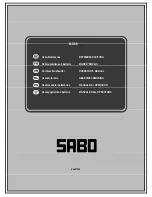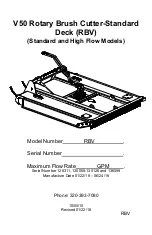
371
(11) Insert the pen so that the nib is touching the top of the material. If you are worried about ink marking
the material, place a thin piece of aluminum foil or plastic wrap on the material first. But do not use
anything thicker than that:
(12) Tighten the front screws and click on
Continue
so that the left side raises and returns home. Remove
the material but leave the sheet of paper.
(13) The top of the paper represents the
CD/ED
target location for the cut. Enter the
CD/ED
from the online
calculator. Only use 1 pass for the test. Speeds can be left at default or made faster, if desired. This is a
test to simply determine if the
CD/ED
is accurate for the material you are cutting.
(14) Set an XY origin and then execute the drawing of the test shape.
If the pen fails to make a mark on the paper, increase the
CD/ED
by 20 and repeat.
If the pen makes a dark mark and indents the paper, decrease the
CD/ED
by 10 and repeat.
If the pen makes a very faint mark on the paper, then the
CD/ED
is within range of making a
successful cut.
(15) You are now ready to test cut with the rotary tool, using this new
CD/ED
that passed the pen test.
Remember to increase
Multi-cut
and decrease speeds so that the bit can work its way through the
material. For a
Start Depth (SD)
, use
ED
divided by the number of
Passes
.
13.06 Attaching a Drill Bit
2
to the Rotary Tool
Alternative method:
•
Select the bit you wish to use and a corresponding collet. The bit should be snug but not be forced into the
collet:
2
For convenience, “bit” refers to either a drill bit or an end mill
Shaft Lock
Collet
Bit
Collet Nut
Shank
Helix (Tip)
Shaft
Содержание KNK Force
Страница 306: ...306...
















































